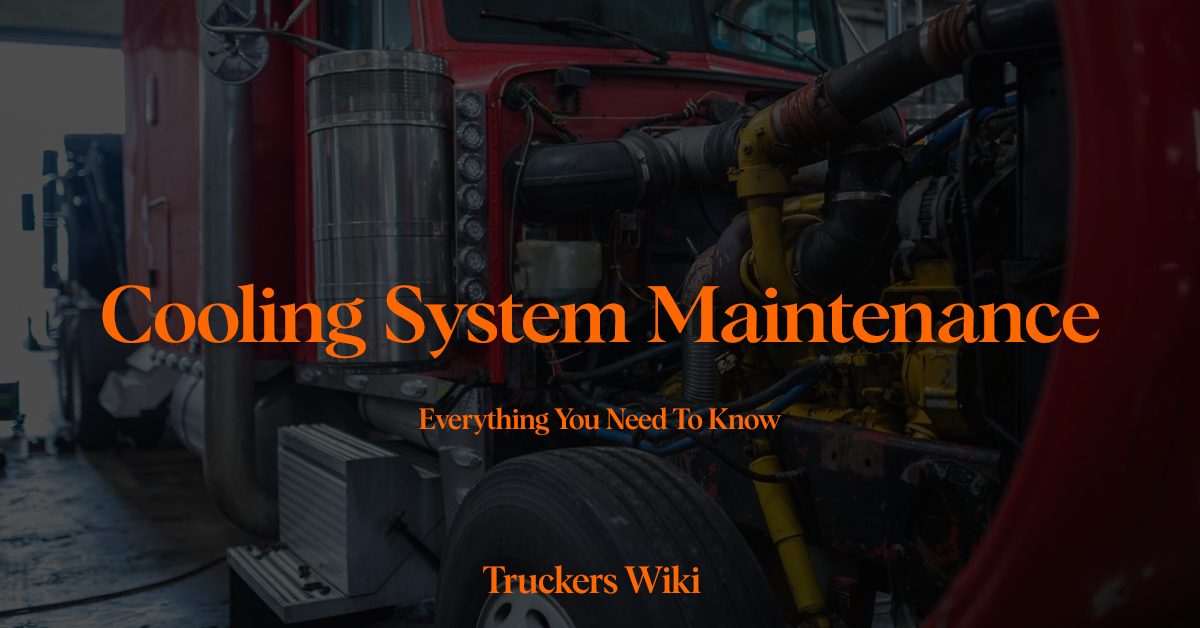
Table of Contents
Semi Truck Cooling System Maintenance
Effective cooling system maintenance is vital for commercial trucks, as it ensures the engine operates within the optimal temperature range. A properly functioning cooling system prevents overheating, which can lead to engine damage and costly repairs. Regular maintenance safeguards engine performance and extends its lifespan.
Role of the Cooling System in Truck Performance
The cooling system plays a crucial role in regulating the engine’s temperature during operation. It prevents excessive heat buildup that can result from the combustion process. By maintaining the engine at an appropriate temperature, the cooling system enhances fuel efficiency, minimizes wear on engine components, and supports consistent power output.
Overview of Common Cooling System Issues
Truck owners and operators should be aware of potential cooling system issues. These can include coolant leaks, radiator obstructions, malfunctioning water pumps, and thermostat problems. Recognizing and addressing these issues promptly is essential to prevent disruptions to truck operation and to maintain engine health.
Now, let’s move on to a deeper exploration of the cooling system’s components and how it functions.
Understanding the Cooling System
Components of the Cooling System
Radiator: The radiator is a heat exchanger that dissipates heat from the engine coolant. It’s essential for maintaining the proper operating temperature.
Water Pump: The water pump circulates coolant throughout the engine, ensuring even distribution of heat and preventing hotspots.
Thermostat: The thermostat regulates coolant flow by opening and closing based on the engine’s temperature. It helps maintain consistent operating temperatures.
Hoses and Belts: Hoses transport coolant between the engine and radiator, while belts drive the water pump. Inspecting these components is crucial for preventing leaks and ensuring efficient circulation.
How the Cooling System Works
Heat Dissipation: As the engine runs, it generates heat. The cooling system absorbs this heat through coolant and transports it to the radiator, where it’s released into the air.
Circulation of Coolant: The water pump circulates coolant through the engine, absorbing heat from various components. The heated coolant travels to the radiator, where it’s cooled down before being recirculated.
Cooling System Maintenance Best Practices
Regular Coolant Checks and Changes
Importance of Clean and Adequate Coolant: Clean coolant helps dissipate heat effectively and prevents corrosion. Regularly checking coolant levels and quality ensures optimal cooling system performance.
Recommended Intervals for Coolant Changes: Follow manufacturer guidelines for coolant replacement. Over time, coolant loses its effectiveness, and changing it at the recommended intervals helps prevent overheating and component damage.
Inspecting Hoses and Belts
Signs of Wear and Damage: Check hoses for cracks, bulges, or soft spots. Inspect belts for fraying or cracks. Damaged components can lead to coolant leaks or interrupted circulation.
How to Properly Inspect and Replace: Use visual inspection and tactile examination to identify wear. Replace damaged hoses and belts promptly to prevent potential breakdowns.
Radiator Maintenance
Cleaning and Removing Debris: Regularly clean the radiator’s exterior to prevent debris buildup. Obstructions can hinder heat dissipation, leading to overheating.
Checking for Leaks: Inspect the radiator and connections for signs of coolant leakage. Addressing leaks promptly prevents coolant loss and potential engine damage.
With proper maintenance practices in place, truckers can mitigate potential cooling system issues. In the next section, we’ll explore common cooling system problems and how to troubleshoot them effectively.
Common Cooling System Issues and Troubleshooting
Overheating
Causes of Overheating: Overheating can result from low coolant levels, a malfunctioning thermostat, or a failing water pump. Identifying the root cause is essential for effective troubleshooting.
Steps to Address Overheating: If the engine temperature rises abnormally, pull over safely and turn off the engine. Check coolant levels, inspect for leaks, and consult a professional if needed.
Coolant Leaks
Identifying Leak Sources: Trace the origin of coolant leaks to prevent further loss. Leaks can occur from hoses, connections, the radiator, or the water pump.
Repairing or Replacing Components: Depending on the severity of the leak, repair or replace the affected components. Prompt action prevents coolant loss and engine overheating.
Preventive Measures for Cooling System Health
Regular Temperature Monitoring
Importance of Temperature Gauges: Monitor engine temperature using onboard gauges. Sudden spikes or consistent high readings indicate potential cooling system issues.
Recognizing Abnormal Temperature Readings: If the temperature gauge shows abnormal levels, pull over and let the engine cool before investigating further. Addressing temperature irregularities promptly prevents overheating.
Proper Coolant Mixture
Maintaining the Right Coolant-to-Water Ratio: The ideal mixture ensures efficient heat transfer and prevents freezing in cold temperatures or boiling in hot conditions.
Preventing Freezing and Boiling: Using the appropriate coolant mixture for seasonal variations helps prevent coolant from freezing in winter or boiling in summer.
Avoiding Overheating Situations
Proper Load Management: Avoid overloading the truck, as excess weight places additional strain on the cooling system. Follow weight limits to prevent overheating.
Using Engine Braking on Descents: Engage engine braking when descending hills to reduce reliance on friction brakes. This minimizes heat buildup in both the braking and cooling systems.
By implementing these preventive measures, truckers can ensure their cooling systems operate optimally and minimize the risk of overheating or other cooling-related problems. In the upcoming section, we’ll conclude the article by summarizing key points and emphasizing the importance of regular cooling system maintenance.
Learn how to test your radiator pressure with this amazing video from adept ape.
Learn more about Diesel Engine + Maintenance here.
Learn about the different types of Semi Truck Tires here.
Learn about Pre-Trip Vehicle inspection here.
Here is a Preventive Truck Maintenance a Comprehensive Guide.
Audio Article Cooling System Maintenance Everything you need to know
Last modified: February 24, 2024

